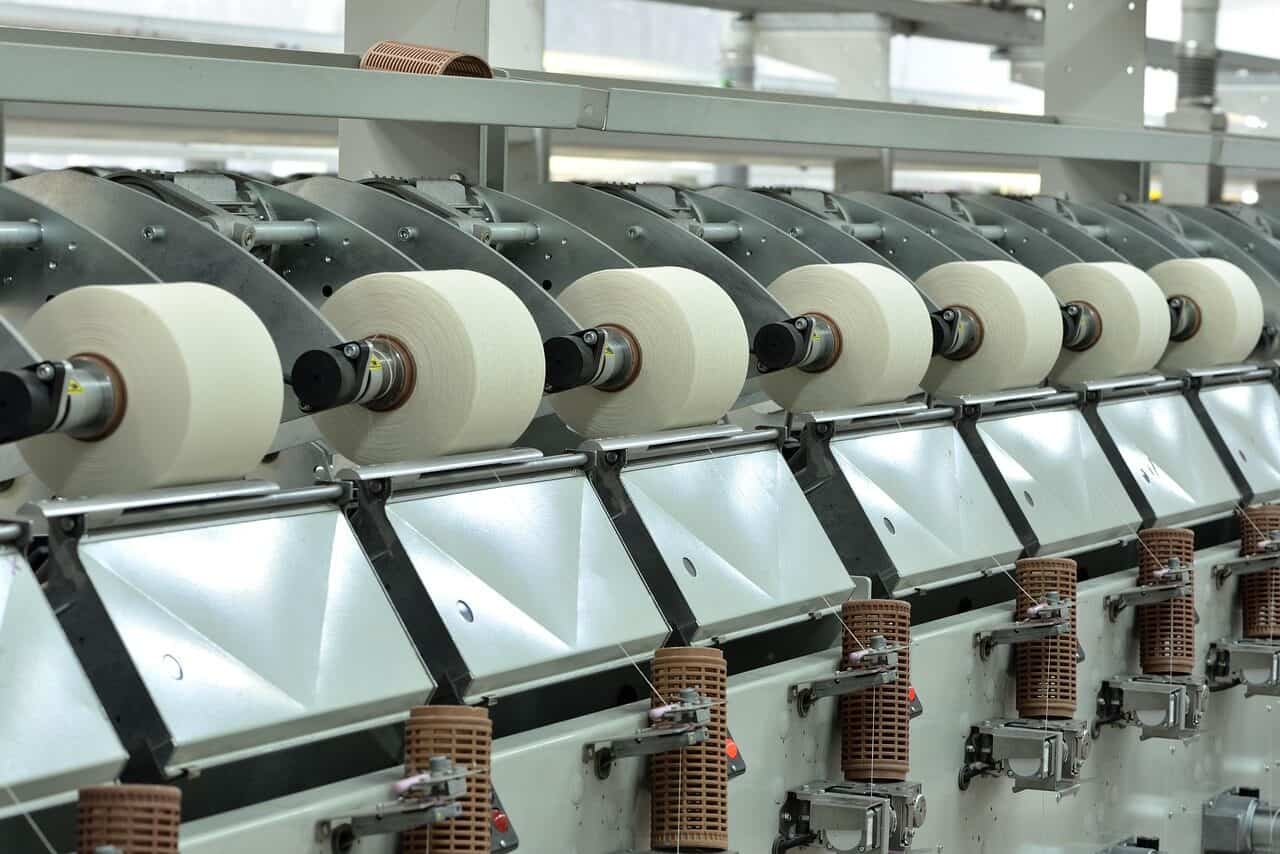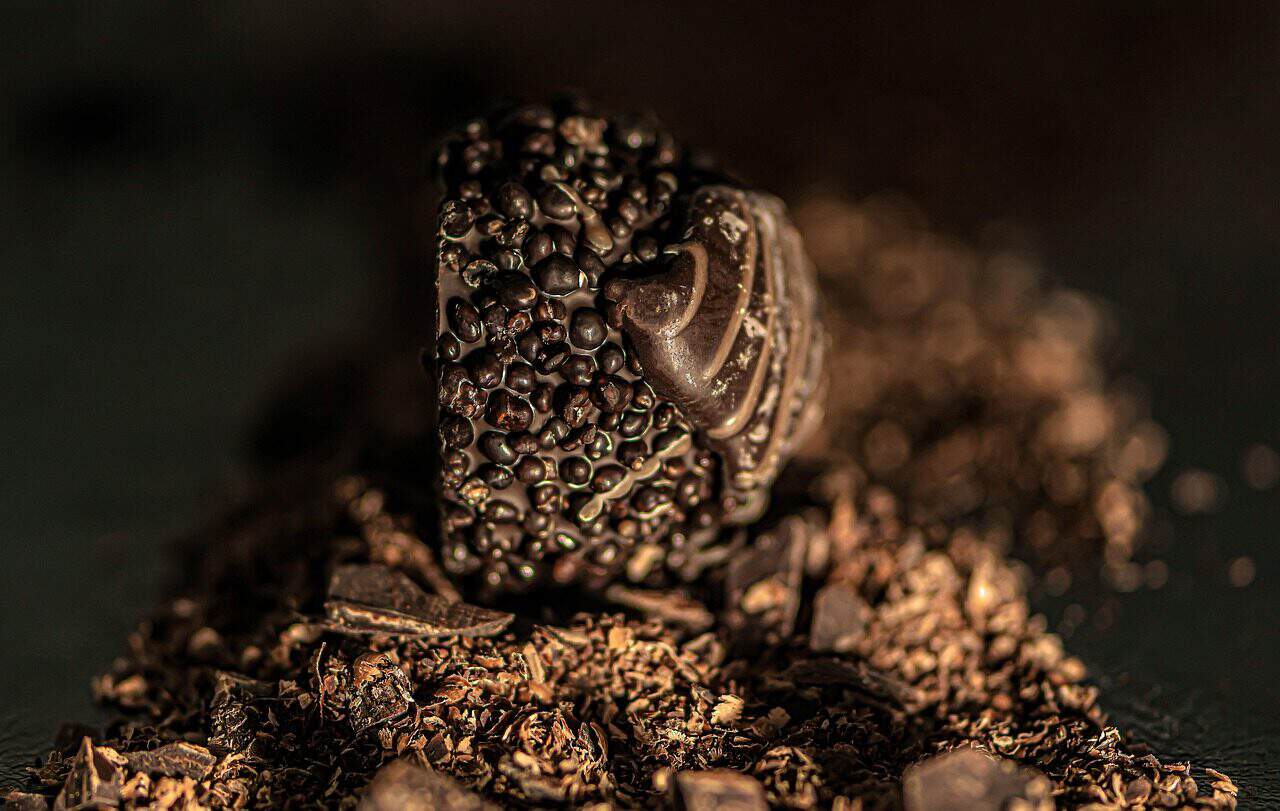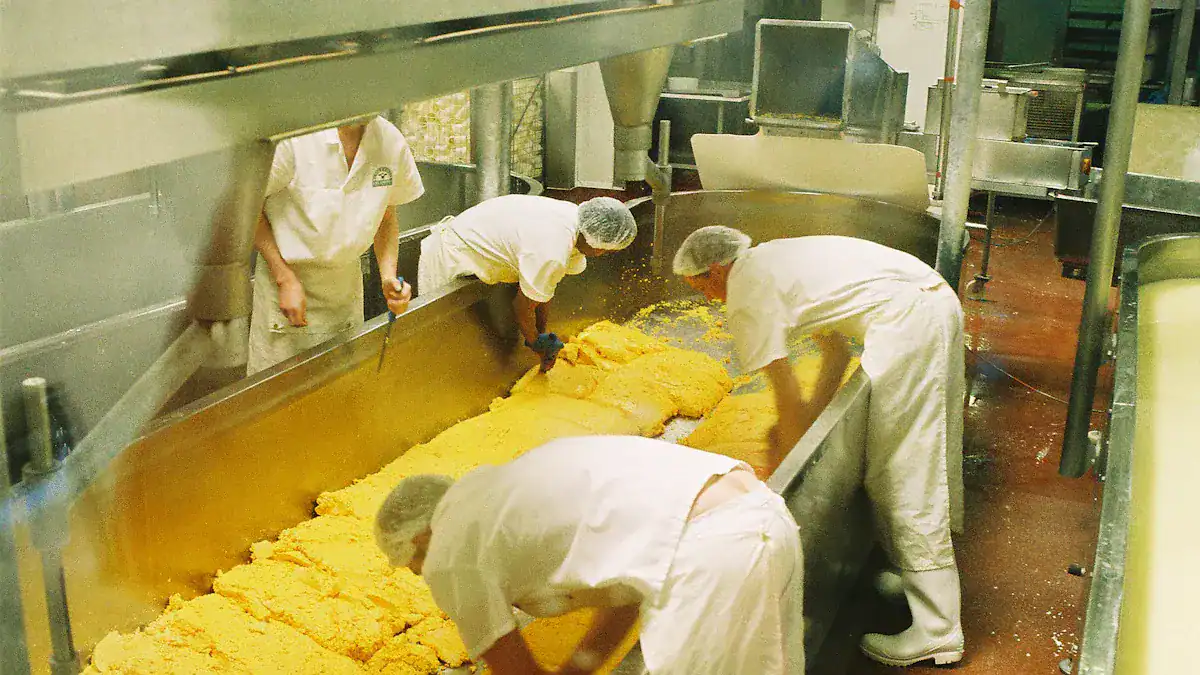
Source de l'image : pexels
Lorsque je parle de machine à biscuits, les gens pensent à deux choses. Certains voient une grosse machine alimentaire qui façonne et cuit des biscuits. D'autres pensent à un outil de menuiserie qui découpe des fentes dans le bois. Je veux parler de la machine destinée à l'industrie alimentaire. Cette machine est importante parce qu'elle aide un marché en pleine croissance. Le marché mondial des machines à fabriquer des biscuits s'élevait à $5,4 milliards en 2024. Il pourrait atteindre $8.2 milliards en 2033. car de plus en plus de gens veulent des biscuits et l'automatisation augmente. Savoir comment ces machines fonctionnent m'aide à faire les bons choix. C'est vrai si je possède une boulangerie ou si j'aime simplement en savoir plus sur la technologie alimentaire.
Machine à biscuits: Principaux enseignements
Les machines à biscuits permettent de fabriquer des biscuits plus rapidement en effectuant de nombreuses étapes. Elles mélangent, façonnent, cuisent, refroidissent et emballent elles-mêmes les biscuits. Le choix de la meilleure machine permet de produire plus de biscuits. Elle permet également d'économiser de l'argent et d'améliorer la qualité des biscuits. De bons outils de mélange et de découpe permettent aux biscuits de se sentir bien et d'être beaux à chaque fois. La cuisson, le refroidissement et l'emballage intelligents permettent de conserver la fraîcheur et la saveur des biscuits. Ils contribuent également à ce que les biscuits restent propres à la consommation. Les nouvelles technologies, comme l'automatisation, permettent aux machines à biscuits de bien fonctionner. Les fonctions d'économie d'énergie les rendent également faciles à utiliser.
Lors du choix d'un machine à biscuits, il est important de tenir compte du prix pour trouver la meilleure valeur et maximiser votre retour sur investissement.
Qu'est-ce qu'un Machine à biscuits?
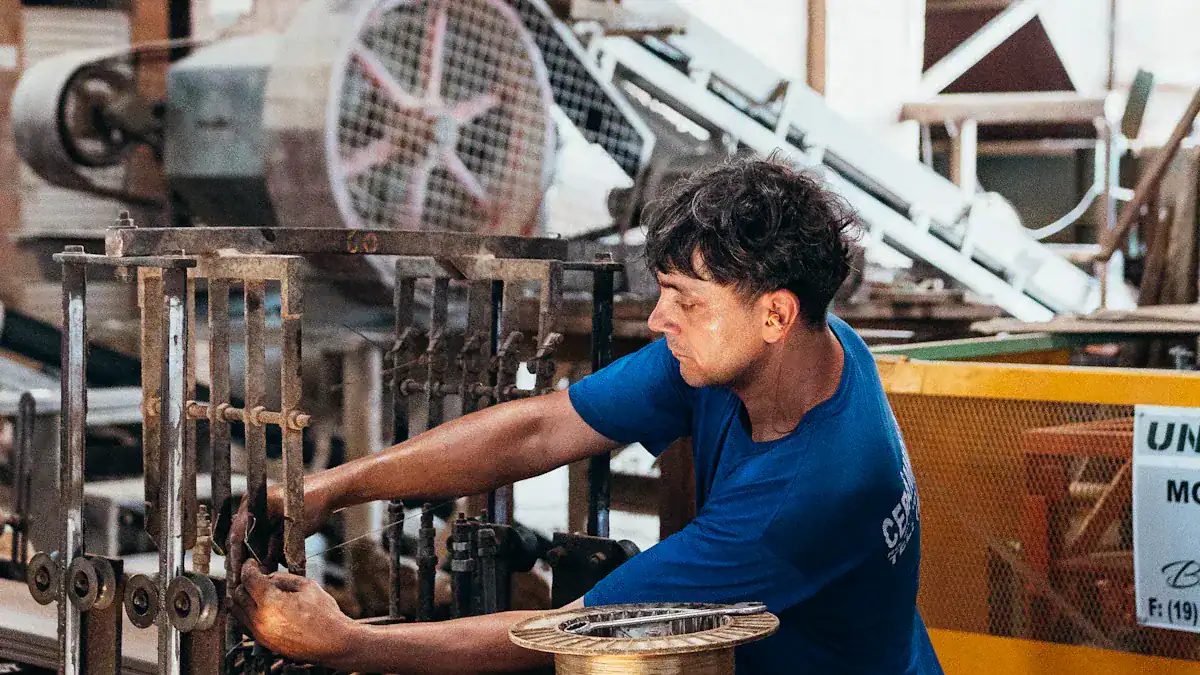
UN machine à biscuits est un équipement spécialisé utilisé dans l'industrie alimentaire pour automatiser le processus de fabrication des biscuits. Il se compose généralement de plusieurs éléments, notamment des pétrins, des formeuses, des fours et des unités d'emballage, qui fonctionnent tous ensemble pour rationaliser la production de biscuits. Les principaux fabricants conçoivent et fabriquent ces machines pour garantir l'efficacité et la qualité de la production de biscuits. De nombreux fabricants proposent également des services tels que la conception, l'installation et la mise en service de l'usine, ainsi qu'un service après-vente continu, comprenant l'entretien, la formation et les mises à niveau, afin d'aider les clients tout au long du processus de production.
Source de l'image : pexels
Production alimentaire Machine à biscuits
Lorsque j'entre dans une boulangerie, je remarque la machine à biscuits. Elle transforme très rapidement des ingrédients simples en biscuits savoureux. Cette machine aide les boulangeries à produire plus de biscuits. Elle permet aux employés de consacrer plus de temps à de nouvelles idées et à l'amélioration du goût des biscuits.
Une machine à biscuits dans la production alimentaire se compose de plusieurs éléments. Elle mélange, façonne, cuit, refroidit et emballe les biscuits. Chaque pièce a une fonction particulière. Les machines à biscuits modernes sont conçues pour être faciles à nettoyer et à entretenir, ce qui permet de maintenir une production hygiénique et efficace. Lors du choix d'une machine à biscuits, il est important de vérifier les détails du produit, tels que la taille, le prix et les caractéristiques, afin de s'assurer qu'il répond aux besoins de votre boulangerie. J'aimerais vous expliquer comment ces éléments fonctionnent ensemble pour produire de bons biscuits à chaque fois.
Voici un tableau qui présente les principaux éléments et leur rôle:
Composant | Description de la fonction |
|---|---|
Mélangeur de pâte | Mélange les ingrédients bruts pour créer une pâte homogène, garantissant l'uniformité essentielle à la qualité des biscuits. |
Alimentateur de pâte | Transfère la pâte préparée de manière continue et régulière à l'étape suivante, en maintenant le flux de production. |
Moulins rotatifs | Façonne la pâte en différentes formes de biscuits à l'aide de moules, ce qui permet d'obtenir des dessins complexes et une certaine uniformité. |
Machine à couper le fil | Coupe la pâte en morceaux précis, en particulier pour les pâtes molles ou collantes, en assurant l'uniformité de la taille et de l'épaisseur. |
Four | Cuire la pâte façonnée avec une chaleur contrôlée pour obtenir la texture et la saveur souhaitées. |
Convoyeur de refroidissement | Refroidit progressivement les biscuits cuits pour stabiliser leur structure et éviter la rétention d'humidité. |
Machine d'emballage | Automatise l'emballage et la mise en boîte, protégeant les biscuits et prolongeant leur durée de conservation. |
Machine à sandwich | Applique les garnitures entre les couches de biscuits pour créer des biscuits sandwichs avec une distribution précise de la garniture. |
Machine à décorer | Ajoute des touches finales telles qu'un enrobage de chocolat ou un glaçage pour améliorer l'aspect et la variété. |
Machine à empiler et à compter | Organise les biscuits en piles et les compte afin de les emballer correctement. |
Le processus commence avec le pétrin. Il mélange les ingrédients jusqu'à ce que la pâte soit prête. L'alimentateur de pâte déplace la pâte vers la partie suivante. La mouleuse rotative ou la machine à couper le fil façonne la pâte en biscuits. Le four cuit les biscuits pour qu'ils aient un bon goût et une bonne texture. Après la cuisson, le convoyeur de refroidissement refroidit lentement les biscuits. Ils restent ainsi croquants et frais. La machine d'emballage emballe et met en boîte les biscuits. Les biscuits restent ainsi sûrs et savoureux pour les clients. Certaines machines ajoutent des garnitures ou des décorations pour créer de nouveaux types de biscuits.
Conseil : si vous voulez que votre boulangerie produise plus de biscuits et qu'elle les conserve bien, une machine à biscuits est un achat judicieux. Elle permet de gagner du temps, de réduire les déchets et de s'assurer que tous les biscuits sont identiques.
La rainureuse dans le travail du bois
Certaines personnes confondent la machine à biscuits pour l'alimentation avec un outil de travail du bois appelé "rainureuse". La rainureuse ne sert pas à faire de la pâtisserie. Elle permet d'assembler deux pièces de bois. Elle découpe de petites fentes dans le bois. Je place ensuite un "biscuit" fin et ovale dans la fente. Lorsque je colle et serre le bois, le biscuit gonfle et maintient les pièces serrées. Cet outil permet de réaliser des assemblages solides et cachés dans les meubles et les armoires.
Si vous voulez faire des biscuits pour manger, utilisez une machine à biscuits alimentaires. Si vous voulez construire des meubles, utilisez une rainureuse. Connaître la différence permet de choisir le bon outil.
Machine à biscuits Fonctionnement
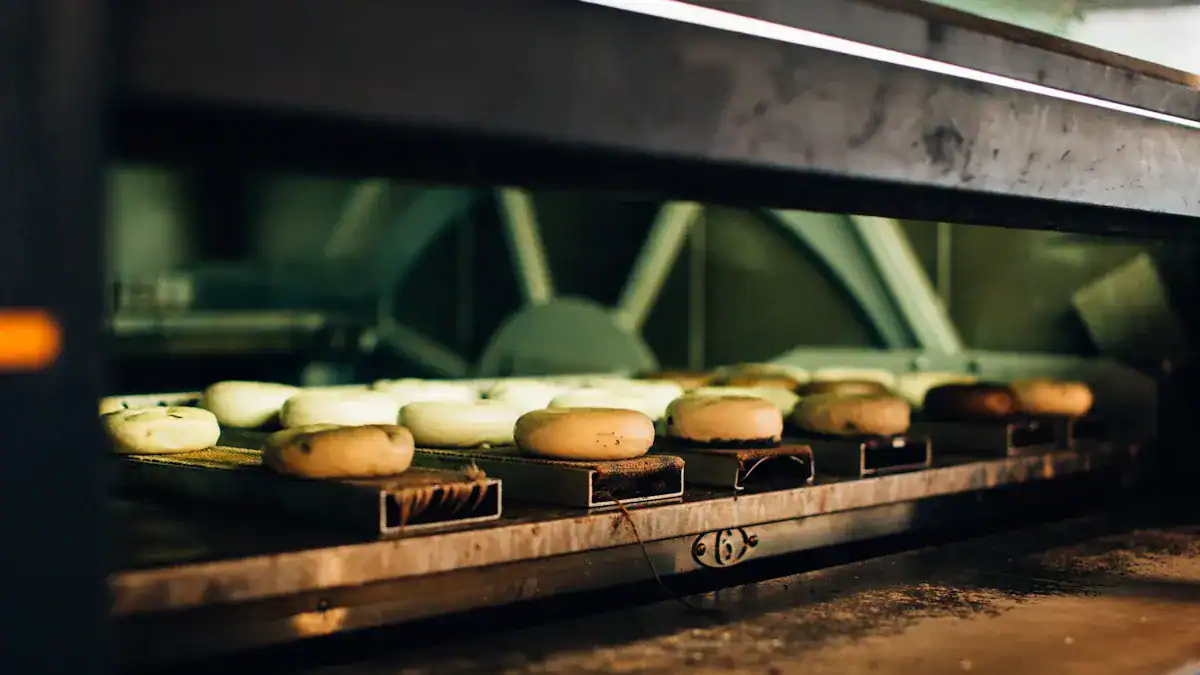
Source de l'image : pexels
Lorsque je regarde une machine à biscuits, je vois un système intelligent. Il prend des choses simples et en fait des biscuits savoureux. Chaque étape est importante.
Avec les machines à biscuits automatisées, les opérateurs peuvent oublier les étapes manuelles qui prennent du temps et se concentrer sur la qualité et l'efficacité.
Si vous souhaitez obtenir de bons biscuits à chaque fois, vous devez connaître ces étapes et savoir pourquoi elles sont importantes.
Mélange et pétrissage
Le mélange et le pétrissage sont les premières étapes. Je me concentre toujours sur cette partie, car elle est très importante. Le choix d'un bon mélangeur est très utile. J'utilise les pétrins horizontaux pour les pâtes nécessitant un gluten fort. Ces batteurs sont dotés de pales Z, sigma ou à palettes et de racloirs. Ils mélangent bien la pâte et la maintiennent au frais. Parfois, j'utilise Mélangeurs à spirale pour grands lots. Ils pétrissent en douceur et ne rendent pas la pâte trop chaude. Pour les petites quantités, j'utilise des batteurs planétaires. Le bol reste immobile tandis que l'outil tourne. Cela permet de tout mélanger uniformément.
Voici les principaux outils de mélange et de pétrissage que j'utilise :
Mélangeurs horizontaux pour un gluten fort et des lots importants.
Mélangeurs en spirale pour un pétrissage en douceur et moins de chaleur.
Mélangeurs planétaires pour les petites et moyennes séries.
Mélangeurs continus pour une pâte rapide et homogène dans les grandes usines.
Je vérifie toujours la température de la pâte, l'eau et la vitesse de pétrissage. Si j'utilise une farine contenant plus de protéines, je pétris plus longtemps pour obtenir la bonne texture. Le bol contient le mélange, la palette remue et le crochet pétrit jusqu'à ce que la pâte soit prête.
Conseil : si vous voulez que tous les biscuits aient le même goût, achetez une machine à biscuits dotée de bons outils de mélange. Un bon mélange est synonyme de bons biscuits.
Façonnage et découpe
Après avoir mélangé la pâte, je la façonne et la découpe. Cette étape donne à chaque biscuit sa forme et sa taille. Les machines à biscuits modernes utilisent une technologie intelligente à cet effet. J'utilise des fraises rotatives et des fraises à mouvement de va-et-vient pour obtenir des coupes nettes. Les servomoteurs m'aident à obtenir la bonne taille à chaque fois, même à 0,1 mm près. Si je veux une nouvelle forme, je change rapidement de matrice. Parfois, j'utilise la découpe par ultrasons pour les pâtes collantes. Elle utilise des vibrations rapides pour couper proprement et gaspiller moins de pâte.
Voici un tableau avec quelques outils de façonnage et de coupe J'utilise :
Technologie/caractéristiques | Description |
|---|---|
Couteaux rotatifs/réciproques | Réalise des coupes nettes sans écraser la pâte |
Systèmes entraînés par servomoteur | La bonne taille à chaque fois |
Matrices interchangeables | Permet de changer rapidement de forme |
Coupe par ultrasons | Utilisation de secousses rapides pour des coupes nettes |
Contrôle intelligent de la pression | Modifie la pression pour différentes pâtes |
Alimentation automatisée de la pâte | Déplacement de la pâte en douceur et dans les délais impartis |
Interfaces numériques | Facilite l'utilisation de la machine |
Si vous voulez que vos biscuits soient parfaits, choisissez un machine à biscuits avec ces outils de façonnage et de coupe.
Cuisson et pulvérisation d'huile
C'est en cuisant que les biscuits acquièrent leur goût et leur croustillant. Je mets les four entre 200°C et 300°C. Les biscuits sont ainsi croustillants et dorés. J'utilise une machine à biscuits avec un bon contrôle de la température. Même un petit changement de température peut ruiner les biscuits. Je surveille la cuisson temps, de sorte que chaque Le biscuit est juste ce qu'il faut.
Après la cuisson, je vaporiser de l'huile sur les biscuits. Cela les rend plus brillants et plus odorants. L'huile donne une belle couleur et un goût riche. Lorsque je vaporise de l'huile de façon uniforme, les biscuits ont une belle apparence et sentent bon. Les gens le remarquent tout de suite.
Remarque : si vous voulez que vos biscuits soient bien visibles, pulvérisez toujours de l'huile à la fin. Vos biscuits seront ainsi plus beaux et plus savoureux.
Refroidissement et conditionnement
Le refroidissement et l'emballage sont les dernières étapes, mais elles sont très importantes. Si je refroidis les biscuits trop vite ou trop lentement, ils perdent leur croquant ou se détrempent. J'utilise un tapis de refroidissement pour amener lentement les biscuits à température ambiante. Cela permet de conserver la bonne texture et d'éviter la perte d'humidité.
Pour l'emballage, j'utilise des matériaux qui empêchent l'air et l'eau de pénétrer. Pour les biscuits fourrés, j'utilise un emballage spécial pour que le biscuit reste croustillant et la garniture moelleuse. Parfois, j'utilise emballage sous atmosphère modifiée. L'air contenu dans l'emballage est remplacé par du dioxyde de carbone. Les biscuits restent frais plus longtemps sans produits chimiques supplémentaires.
J'ai toujours conserver les biscuits dans des récipients hermétiquesà l'abri de la chaleur et de la lumière. Pour des biscuits croustillants, j'ajoute des couches de papier ciré. Pour les biscuits moelleux, je place une tranche de pain dans le récipient pour qu'ils restent moelleux. Pour les biscuits salés, j'utilise des sachets qui absorbent l'humidité.
Si vous voulez que vos biscuits restent frais et savoureux, utilisez une machine à biscuits dotée d'un bon système de refroidissement et d'emballage. Vos clients remarqueront la différence.
Types de machines à biscuits
Lorsque je choisis une machine à biscuits pour ma boulangerie, je regarde ce que chaque type de machine fait de mieux. Chaque machine a quelque chose de spécial qu'elle peut faire. Chaque type de machine à biscuits est adapté à la production de différents types de biscuits, des biscuits moelleux aux crackers croustillants. Choisir la bonne machine m'aide à produire plus de biscuits, à économiser de l'argent et à améliorer la qualité.
Type de machine | Description | Capacité/Production |
|---|---|---|
Moulage rotatif | Utilise des rouleaux pour presser la pâte dans des formes détaillées | Jusqu'à 1000 biscuits par minute |
Coupe de fil | Pousse la pâte à travers les buses, tranche avec un fil pour les pâtes molles | Jusqu'à 500 biscuits par minute |
Déposant | Dépose les quantités exactes de pâte pour les biscuits fourrés ou façonnés | Jusqu'à 300 dépôts par minute |
Four tunnel | Permet de cuire de grandes quantités avec une chaleur homogène | Jusqu'à 5000 livres de pâte par heure |
Four rotatif | Rotation des plateaux pour une cuisson homogène, idéal pour les lots de taille variable | Environ 1500 livres par lot |

Machine à biscuits rotative
J'utilise machines à biscuits rotatifs lorsque je dois travailler rapidement et que je veux des formes amusantes. Ces machines sont dotées de rouleaux avec des moules spéciaux qui pressent la pâte pour créer des motifs originaux. Certaines des machines à biscuits rotatives les plus réputées sont fabriquées en Italie, où elles sont reconnues pour leur qualité et leur durabilité. Je peux faire jusqu'à 1 000 biscuits par minute. J'aime pouvoir changer les moules pour créer de nouvelles formes ou ajouter des mots. La machine remet les restes de pâte dans le moule, ce qui permet de ne rien gaspiller. Les machines rotatives sont silencieuses et ne consomment pas beaucoup d'énergie, ce qui me permet d'économiser de l'argent. Je peux faire des sablés, des biscuits au beurre ou même des friandises pour chiens avec cette machine.
Conseil : si vous souhaitez obtenir de nombreux biscuits aux formes originales, procurez-vous une machine rotative. machine à biscuits.
Machine à biscuits coupés au fil
Pour les pâtes molles ou collantes, j'utilise un machine à découper les biscuits en fil de fer. Cette machine fait sortir la pâte par des buses et la coupe à l'aide d'un fil. J'utilise un écran tactile pour choisir la vitesse et la forme. L'appareil peut mémoriser jusqu'à 400 recettes, ce qui me permet de changer rapidement de préparation. Je peux faire des biscuits, des muffins et différentes pâtisseries. Les petites machines à biscuits à fil coupant sont également populaires pour la pâtisserie domestique, car elles sont pratiques et offrent des résultats professionnels aux cuisiniers amateurs. La tête de la machine se détache, ce qui permet de la nettoyer facilement et en toute sécurité. Je peux également changer les buses et les moules pour essayer de nouvelles choses.
Machine à biscuits Depositor
Lorsque je veux faire des biscuits fourrés ou spéciaux, j'utilise un machine à déposer les biscuits. Il dépose la bonne quantité de pâte ou de garniture sur les plateaux. Ainsi, tous les biscuits ont le même aspect et le même goût. Je peux utiliser de la confiture, de la crème ou du chocolat comme garniture. La machine fonctionne rapidement et garde les choses propres, ce qui contribue à la sécurité alimentaire. J'économise de l'argent parce qu'elle utilise toute la garniture et nécessite moins de travail de la part des gens. Les commandes sont faciles à utiliser, ce qui me permet d'essayer de nouveaux parfums et de nouvelles formes sans me ralentir.
Je fais des biscuits plus rapidement avec un fourrage automatique.
Chaque biscuit reçoit la même quantité de garniture.
Je peux créer de nombreuses formes et utiliser différentes garnitures.
La machine garde tout propre et sûr.
Je dépense moins d'argent en travailleurs et en déchets.
Des commandes simples permettent de passer moins de temps à résoudre les problèmes.
Je peux rapidement trouver de nouvelles idées de biscuits.
Machine d'emballage
Après la cuisson, je dois emballer les biscuits rapidement et les garder frais. Les nouvelles machines d'emballage utilisent des capteurs intelligents et des ordinateurs pour réduire les déchets et accélérer le processus. Je peux observer le processus en direct et résoudre rapidement les problèmes. La conception me permet de changer facilement de produit. Les biscuits cassés ou la pâte supplémentaire sont réutilisés, ce qui permet d'économiser de l'argent. Ces machines consomment moins d'énergie, ce qui me permet de réduire mes factures et de préserver la planète. Des capteurs de qualité vérifient chaque emballage, de sorte que les clients reçoivent toujours de bons biscuits.
Note : Si vous voulez que votre entreprise se développe, obtenez une machine d'emballage intelligente. Vous gaspillerez moins, vous emballerez plus rapidement et vous ferez plaisir à vos clients.
Avantages des machines à biscuits
Efficacité et productivité
Lorsque j'ai commencé à utiliser des machines à biscuits, j'ai fait plus de biscuits chaque jour. Les machines travaillent beaucoup plus vite que les hommes. Aujourd'hui, un technicien peut faire fonctionner une ligne qui nécessitait dix travailleurs auparavant. Voici comment les machines peuvent m'aider à faire plus de biscuits :
Les lignes automatisées fonctionnent presque tout le temps, ce qui me permet de faire des biscuits jour et nuit.
Machines mélanger, façonner, cuire et emballer les biscuits en un seul processus facile.
Je dépense moins d'argent pour les travailleurs parce que j'ai besoin de moins de personnes.
Le système utilise moins de matériaux et d'énergieAinsi, mes coûts diminuent.
Mon entreprise s'est développée parce que je pouvais honorer des commandes importantes et répondre aux demandes des clients. L'amélioration de l'efficacité et de la productivité a également permis d'étendre les ventes à de nouveaux marchés et d'augmenter le chiffre d'affaires global. J'ai gagné plus d'argent et j'ai eu moins d'erreurs à corriger.
Conseil : si vous voulez que votre boulangerie se développe, achetez des machines. Vous ferez plus de biscuits avec moins de travail.
Cohérence et qualité
Je veux que tous les biscuits aient la même apparence et le même goût. Les machines m'aident à bien faire ce travail. Elles mesurent les ingrédients, mélangent la pâte et cuisent avec un timing parfait. Ainsi, chaque fournée est parfaite. Voici ce que m'apporte l'utilisation de machines :
Chaque lot est mélangé et cuit de la même manière.
Des capteurs contrôlent la chaleur et l'humiditéPour que les biscuits ne brûlent pas et ne se détrempent pas, il faut les faire cuire à l'air libre.
Utilisation des machines pièces en acier inoxydable sans danger pour les aliments.
Les systèmes de contrôle de la qualité détectent les problèmes avant que les biscuits ne quittent l'usine.
Mes clients font confiance à ma marque parce qu'ils reçoivent toujours les mêmes bons biscuits.
Sécurité et hygiène
La sécurité alimentaire est très importante pour moi. Les machines modernes facilitent la propreté et la sécurité. J'utilise des équipements en acier inoxydable lisse et des pièces démontables. Cela me permet de nettoyer rapidement et d'empêcher la prolifération des germes. Voici un tableau avec quelques caractéristiques importantes:
Catégorie d'article | Caractéristiques spécifiques | Objectif/bénéfice |
|---|---|---|
Conception hygiénique | Surfaces faciles à nettoyer, acier inoxydable, pièces amovibles, cycles de nettoyage automatiques | Arrêter les bactéries et préserver la sécurité des aliments |
Caractéristiques de sécurité | Boutons d'arrêt d'urgence, protections de sécurité, arrêt automatique | Assurer la sécurité des travailleurs et veiller à ce que les machines puissent être utilisées en toute sécurité |
Maintenance | Pièces faciles à enlever | Nettoyage rapide et moins de temps d'arrêt |
Je suis sûr que mes biscuits peuvent être consommés par tout le monde.
Tendances et innovations
Automatisation et contrôles intelligents
L'automatisation modifie la fabrication des biscuits. Les robots mélangent, coupent, cuisent et emballent désormais les biscuits. Ces machines travaillent rapidement et ne se fatiguent pas. Des capteurs et des programmes intelligents surveillent chaque pas. Si quelque chose ne va pas, je suis immédiatement averti. Je peux résoudre les problèmes avant que la machine ne s'arrête. L'IA m'aide à savoir si une pièce risque de se casser bientôt.. Je peux régler le problème à temps et éviter d'arrêter la ligne. Grâce aux commandes intelligentes, je vois la quantité que j'utilise et la vitesse à laquelle je travaille. Je gaspille moins et je fais toujours de bons biscuits.
L'automatisation permet d'économiser de l'argent sur les travailleurs et de réduire les erreurs. Mes biscuits ont toujours la même apparence et le même goût. Les travailleurs peuvent effectuer des tâches créatives, comme l'élaboration de nouvelles recettes.
Voici quelques pistes automatisation et contrôles intelligents aider :
Les robots effectuent des tâches difficiles ou risquées et assurent la sécurité des personnes.
Des capteurs et des caméras vérifient que chaque biscuit ne présente pas de problème.
IA et IdO me permettent de surveiller et de modifier les choses de n'importe où.
L'emballage automatisé est plus rapide et garantit la sécurité des biscuits.
Efficacité énergétique
Les économies d'énergie sont très importantes pour moi. Les nouvelles machines utilisent l'IA et les capteurs pour économiser jusqu'à la moitié de l'énergie. J'utilise des fours qui modifient la chaleur en fonction de la pâte et de l'humidité de l'air. Systèmes de récupération de chaleur prendre le surplus de chaleur et le réutiliser. Cela me permet de réduire mes factures. J'utilise des moteurs qui changent de vitesse, de sorte que je n'utilise que l'énergie dont j'ai besoin. Certaines usines utilisent des panneaux solaires pour faire fonctionner leurs machines. Ces changements aident la terre et permettent d'économiser de l'argent.
Fonction d'économie d'énergie | Bénéfice |
|---|---|
Capteurs IA et IoT | Moins de gaspillage d'énergie |
Systèmes de récupération de chaleur | Réduction des coûts opérationnels |
Fours intelligents | Cuisson précise, moins d'énergie |
Moteurs efficaces/VFD | N'utiliser que l'électricité nécessaire |
Personnalisation
Les clients veulent de nouvelles saveurs, de nouvelles formes et des choix sains. J'utilise des machines avec des moules et des réglages que je peux modifier. Je peux passer des biscuits ronds aux biscuits étoilés en quelques minutes. Je peux aussi faire des biscuits sans gluten ou végétaliens. Cela me permet de suivre rapidement les tendances. Je n'ai pas besoin de nouvelles machines pour chaque produit. La personnalisation m'aide à obtenir plus de clients et se démarquer.
Si vous voulez que votre entreprise se développe, choisissez des machines qui vous permettent de fabriquer rapidement de nouveaux produits. Vous aurez toujours une longueur d'avance sur les autres.
Je sais que le fait d'avoir la bonne machine peut vraiment aider ma boulangerie. Lorsque je choisis une machine, je pense à plusieurs choses. Je regarde la la taille des biscuits que je veux faire. Je vérifie également combien de biscuits je dois faire chaque jour. Je décide du type de biscuits que je veux faire. Je réfléchis à la fréquence à laquelle la machine doit être réparée ou nettoyée. Je m'assure que j'ai assez de place dans mon fournil pour la machine. Je vérifie si la machine est équipée de pièces de sécurité pour assurer la sécurité de mon équipe. Je regarde également la quantité d'énergie qu'elle consomme et je vérifie s'il existe un plan de secours.
De nouveaux outils tels que Impression 3D, découpe par ultrasons, et contrôles intelligents m'aident beaucoup. Ils me permettent de fabriquer des biscuits aux formes et aux saveurs nouvelles. Ces outils me permettent également d'économiser de l'énergie. Si vous voulez que votre boulangerie se développe, adressez-vous à des personnes qui connaissent ces machines. Vous devriez examiner tous les choix qui s'offrent à vous avant de prendre une décision.
FAQ
Combien coûte un machine à biscuits coût ?
Les petites machines à biscuits coûtent environ $5 000. De nombreuses machines à biscuits sont fabriquées en Chine, qui est connue pour offrir un large éventail d'options à des prix compétitifs. Les grandes machines automatiques peuvent coûter plus de $100 000. Je pense qu'il est judicieux d'acheter une bonne machine. Une machine de qualité permet de gagner du temps et de faire plus d'argent.
Puis-je faire différents types de biscuits avec une seule machine ?
Oui ! Mes machines ont des moules et des réglages que je peux modifier. Je peux créer rapidement de nouvelles formes, tailles et recettes. Cela m'aide à donner aux clients ce qu'ils veulent et à suivre les nouvelles tendances.
Est-il difficile de nettoyer une machine à biscuits ?
Le nettoyage des machines neuves est simple. Il est recommandé de procéder à un entretien régulier pour que la machine reste propre et fonctionne efficacement. Je peux démonter les pièces rapidement et utiliser des cycles de nettoyage. Des machines propres permettent de conserver des biscuits sûrs et savoureux. Je lis toujours les instructions pour nettoyer correctement.
Les machines à biscuits améliorent-elles vraiment la qualité des produits ?
Oui, c'est le cas. De nombreux fabricants proposent une assistance permanente pour aider les boulangeries à maintenir la qualité de leurs produits. Les machines mélangent, façonnent et cuisent de la même manière à chaque fois. Chaque biscuit a le même aspect et le même goût que le précédent. Mes clients le constatent et font confiance à mes biscuits.
Quel est l'entretien d'une machine à biscuits ?
J'examine les pièces mobiles, je nettoie la machine et je change les vieilles pièces. De nombreux fabricants proposent une assistance à vie, y compris des remises à neuf régulières et des formations pour votre équipe afin de garantir le fonctionnement optimal de la machine. En procédant de la sorte, ma machine reste souvent en bon état de marche. Je suis un plan et j'utilise les bonnes pièces. Cela permet d'éviter les problèmes et d'économiser de l'argent.


